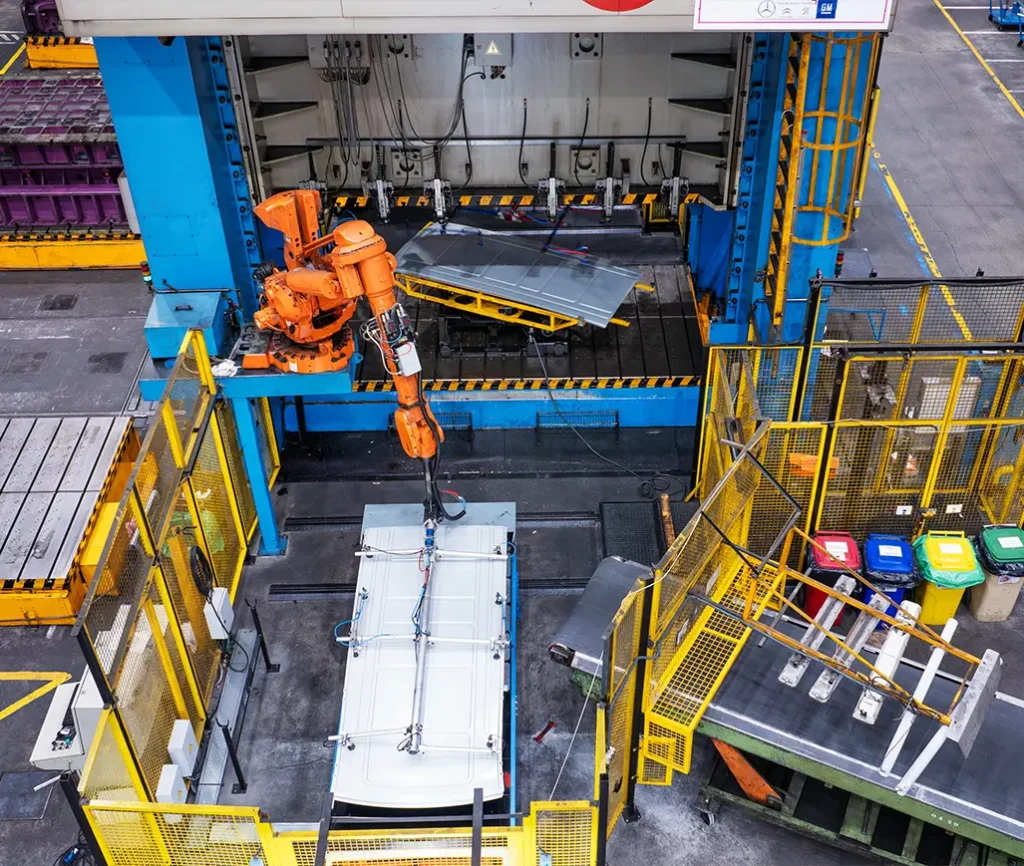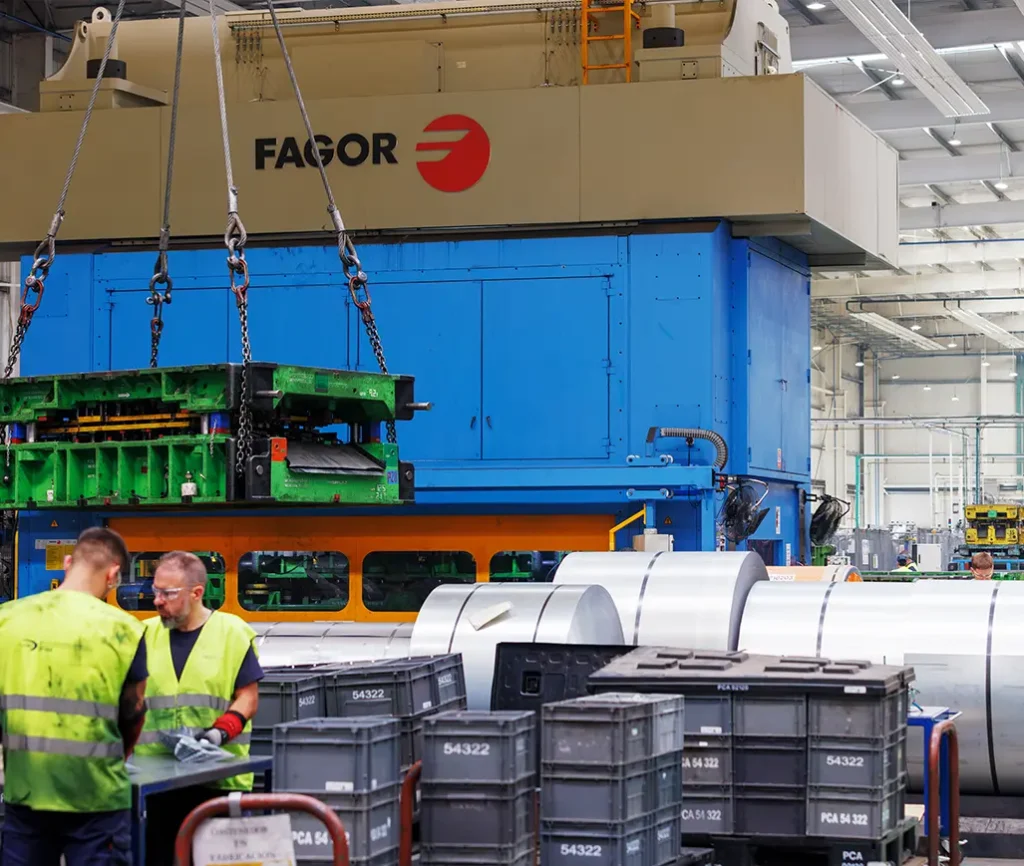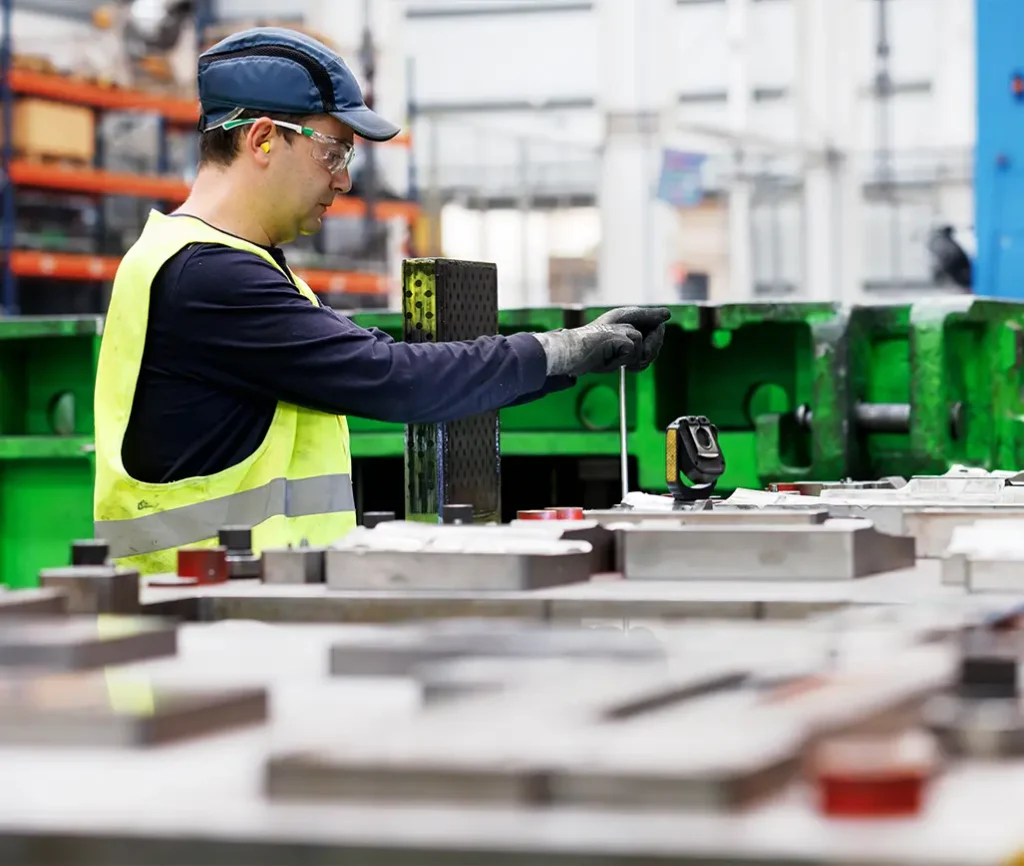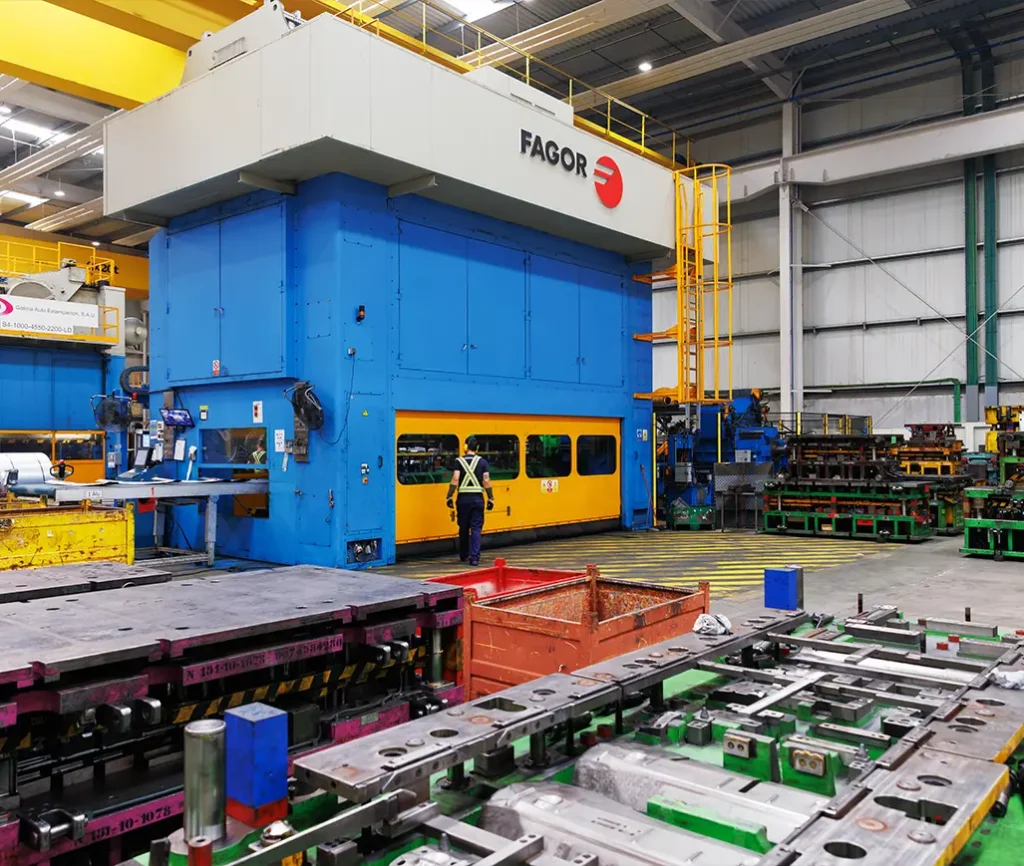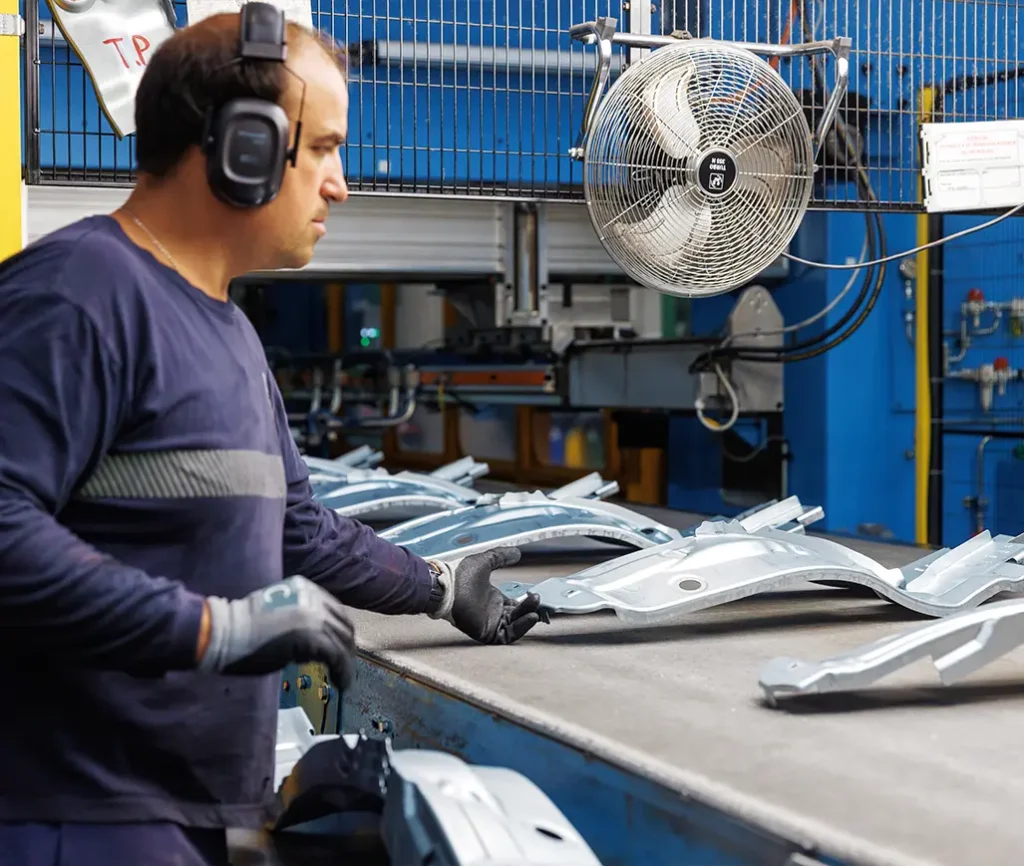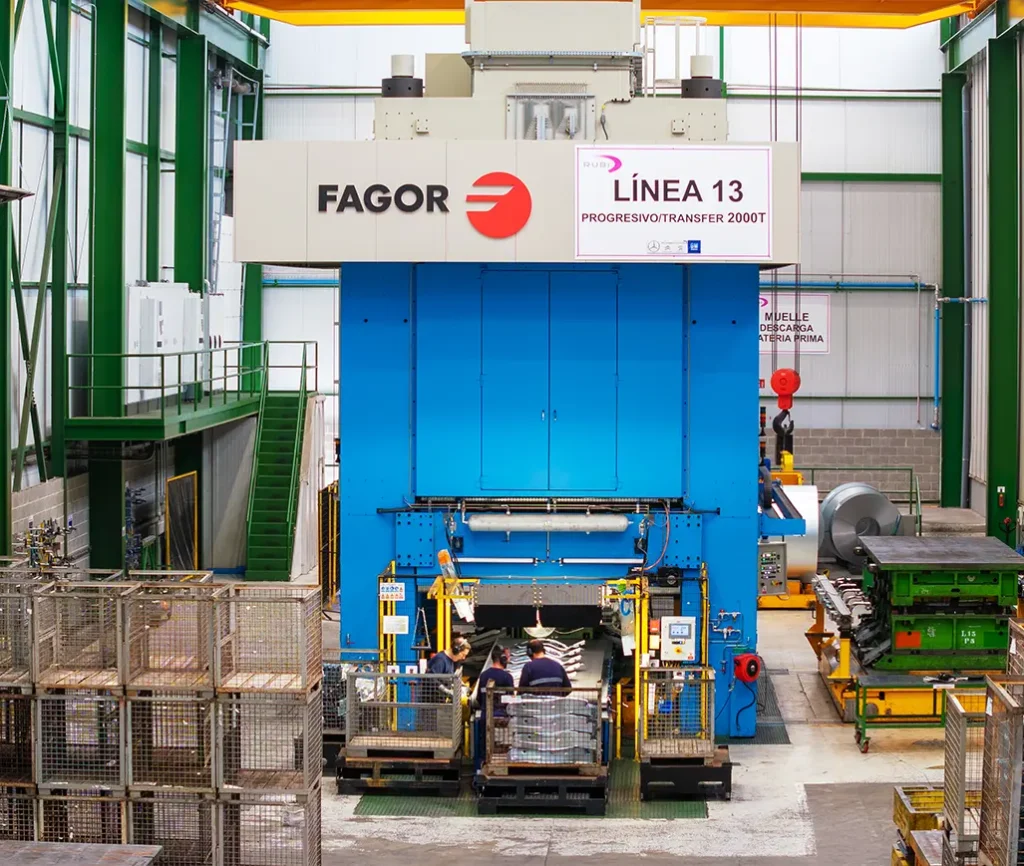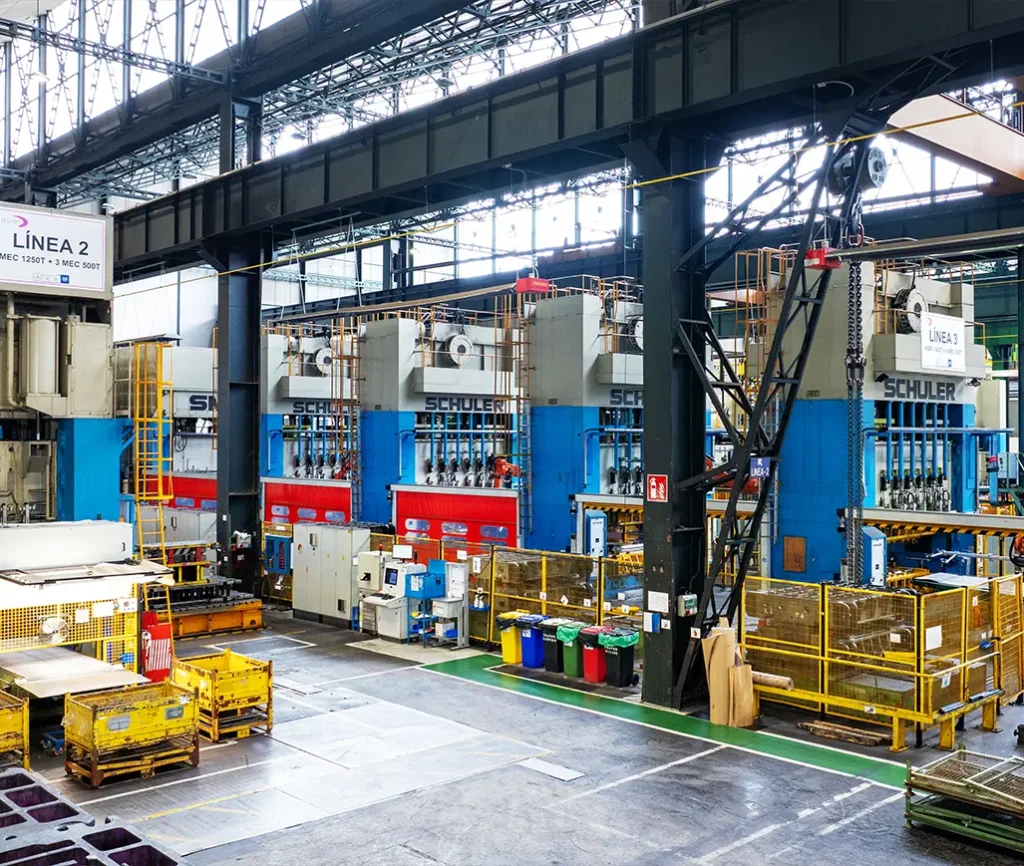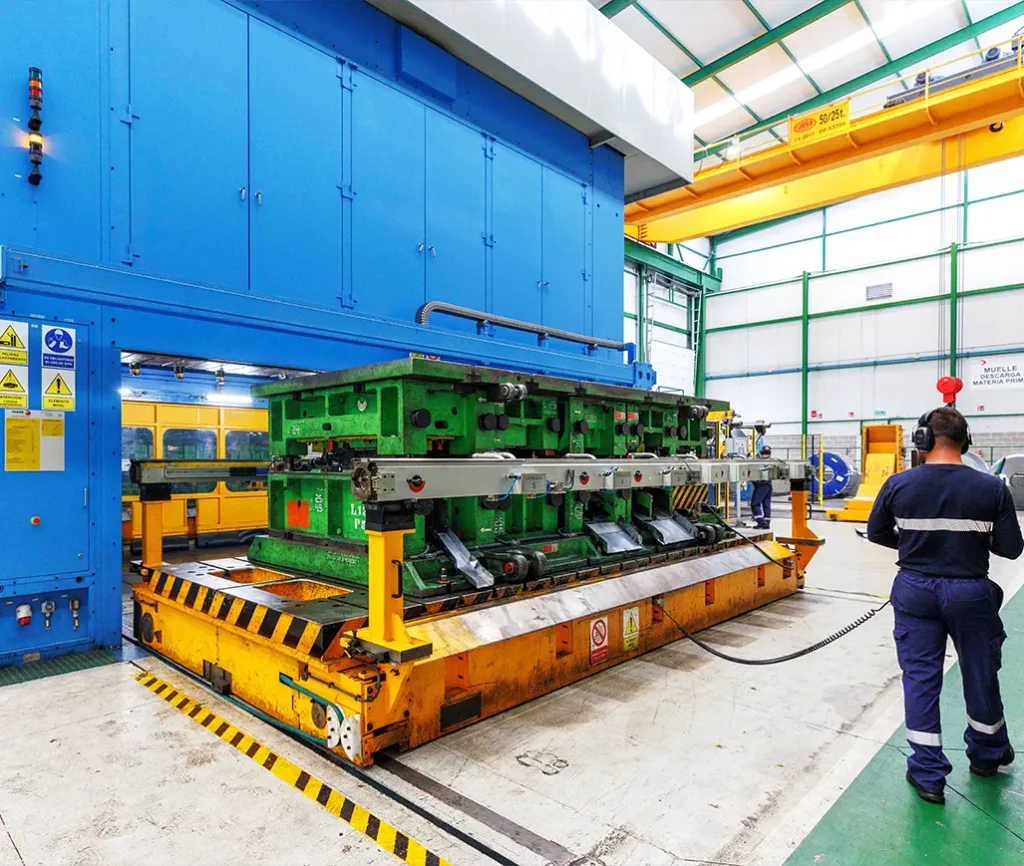Processes:
Stamping
Rubí has provided stamping services from the start, in mid-20th century.
It is an essential process in the manufacture of components. Metal parts are created by applying cold compressive force to sheets or strips of metal. This process is typically performed using hydraulic or mechanical presses to apply controlled pressure on moulds specifically designed to shape the part in question (based on approved requirements).
Need help?
Talk to our specialists
During stamping, the metal sheet is placed between two moulds: an upper (punch) and a lower one (die). The punch descends and exerts pressure on the material, forcing it into the desired shape according to the mould design. This process is fast and efficient, allowing parts with complex geometries and tight tolerances to be mass-produced.
Stamping is widely used in the automotive industry to manufacture components such as body panels, chassis, doors and structural components. Ensuring dimensional accuracy and the surface quality of parts is key, as it contributes to the safety, durability and aesthetics of vehicles.
In addition, cold stamping offers significant advantages (such as reduced production costs, less material waste and faster cycle times compared to other manufacturing methods). Therefore, it is a preferred option when mass-producing automotive components in an efficient and cost-effective manner.





